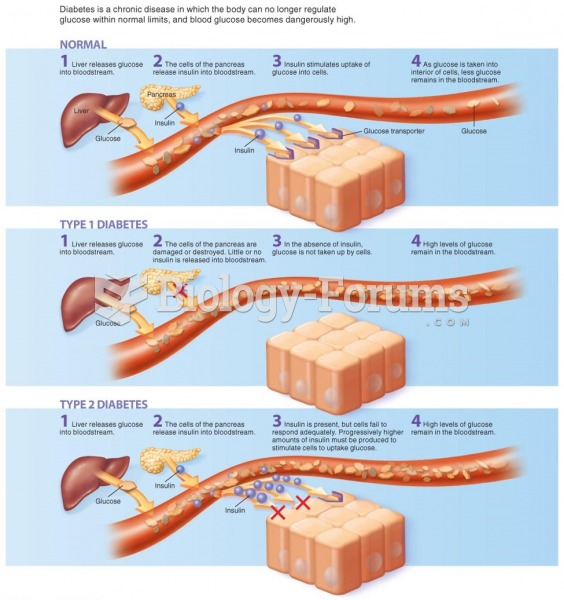After reading the paragraphs below, answer the questions that follow.
Diabetes mellitus is a metabolic disease that is characterized by the buildup of glucose in the blood, or hyperglycemia. Diabetes results either from the pancreas not being able to produce the hormone insulin (type 1 diabetes) or if the body's cells become resistant to insulin (type 2 diabetes). Insulin is a protein that binds to receptors on cell surfaces to allow glucose to enter the cell.
In order to manage the disease, type 1 diabetics require frequent insulin injections. Until the 1970s, insulin was obtained from processing the pancreases of large mammals such as cows and pigs; it was then purified for medicinal use. This all changed in the 1970s with the advent of recombinant DNA technology, which allows scientists to insert genes from other species into bacterial plasmids and have bacteria produce proteins from these other species' genes. In 1978, the gene that codes for human insulin was added to a bacterial plasmid and bacteria were used to produce human insulin. These bacteria acted as mini-factories that produced human insulin for type 1 diabetes patients. Today, the production of human insulin from bacteria is commonplace and is a multibillion dollar market for pharmaceutical companies.
In order to add the gene for human insulin to a bacterial plasmid, the DNA molecules have to be "cut" with enzymes called restriction endonucleases and then pasted back together with enzymes called DNA ligases. Imagine that during this process, the first five nucleotides of the human insulin gene were accidentally cut out before it was pasted into the bacterial plasmid. What is the most likely outcome if this plasmid was added to bacterial cells?
◦ The human insulin protein would be produced as normal.
◦ The human insulin protein would not be produced because transcription would not take place since the RNA polymerase would not recognize the promoter.
◦ The human insulin protein would not be produced because the start codon is missing.
◦ The human insulin protein would be shorter than normal because it will be missing one amino acid.







